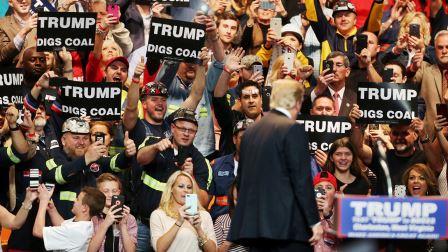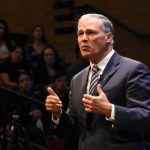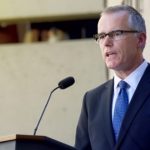These Are The Labor Promises The Presidential Candidates Should Be Making
Donald Trump recently made a promise to coal workers. As the U.S.’s dependence on coal thankfully goes down, Trump spoke to the workers in West Virginia who have been losing their jobs.
He stated proudly at a rally, “We’re going to get those miners back to work . . . They are going to be proud again to be miners.”
It’s an interesting promise to make, one the Associated Press questioned. Its fact-check section wrote, “It is unclear what Trump would do to increase mining jobs.” It went on to detail the U.S.’s waning use of coal, as well as how it’s becoming a depleted resource. The gist is that ultimately looking toward coal—as well as other similarly antiquated industries—for future jobs is dishonest.
But there are ways to speak to voters, discuss the future of work, and make more realistic promises. I asked a few experts which areas of jobs would be actually future-oriented, and here’s what they said.
New Education Opportunities
Gary Burtless, a senior research fellow at the Brookings Institute, nearly laughed when I mentioned Trump’s coal promise. “Let’s hope that if he’s elected president he changes his mind,” he says. “It’s a horrible thing to let on.”
Though Burtless researches labor policy, he has a broader scope of inquiry when considering presidential promises. Instead of looking at potential industries, he thinks it’s better to analyze education. “Personally, I think the segment of the workforce that you want to emphasize,” he says, are those “not destined to go to college . . . or go to a very good college.”
This may seem like a broad and perhaps bizarre angle, but he’s focusing on a very important demographic—one that likely represents the coal miners losing jobs. There are millions of Americans without college diplomas, and many of them do not have proper access to secure jobs.
What these people need, says Burtless, is the ability to get proper training that will give them a real credential that proves their newly mastered expertise. Many candidates focus on fixing higher education, but the people who fall through the cracks in or after high school have few options. As Burtless sees it, those who receive diplomas from “bona fide institutions” have relatively good success in the job market (he does add that the success rate is not “as good as it ought to be”).
“There are tons of occupations out there for which you do not need a college degree,” he says. And employers would like to know that a training program awards certifications to show that the participant is truly skilled.
A public sector initiative, then, that focuses on these sorts of vocational trainings would help out those “who are not going to flourish if you put them in a college classroom.”
Evolving Business Structures
Devin Fidler, research director of the nonprofit organization Institute for the Future, thinks similarly broadly. In his years of research, he’s looked at ways technology has changed how people approach labor and income. One huge evolution he’s noticed is the emergence of “gig work”: On-demand jobs like Uber and Taskrabbit, which make people subcontractors of a technology doling out the job opportunities.
What he and his organization forecast is more of it to come. “We’re likely to see a pretty radical transformation in work processing,” he says. This very likely could change how many business are structured. He mentions the age-old “hierarchical bureaucratic pyramid” with the CEO at the top, managers in the middle, and then widespread lower-wage laborers holding up the organization at the bottom. This formulation is a throwback to the industrial revolution when an organization consisted of thousands of people in a factory needing some way to keep things organized from the top down.
Now, says Fidler, “you can directly access resources.” That is, if a company needs to organize a project, it can bring help in as needed and then be done. Organizations that depend on full-time hierarchies are waning. Fidler believes the logical next step is having technology mediate this transition. For example, an organization could build a piece of software that “systematically runs the management.” It would have ready and able subcontractors at its disposal, find the most qualified people, and then bring them in—an Uber-like app, but for broader labor needs.
“All this has convinced us that organizational models themselves are likely to transition,” says Fidler. “That’s something the next couple of presidents are going to have to deal with.”
The main issue he sees is how these ad hoc employees will receive protections. U.S. labor laws have been made and updated over the last century to protect employees from private organizations’ top brass. This changes when a gig economy employee is using an app to find work. The major issue is figuring out how to ensure these people get social security and other benefits baked into this new model. “Benefits should be portable,” says Fidler.
Currently companies like Uber are fighting to make sure its employees are considered “subcontractors,” meaning the company doesn’t have to offer them benefits and protections. This very issue is going to continue to simmer as more gig-like platforms come about. This has caused some to think the gig economy will fizzle out.
That’s not what Fidler thinks. As he sees it, now is the time for politicians—especially presidents—to set the groundwork for making systems that protect these workers. Twentieth-century labor policy was wholly reactive—conditions were deplorable with no overtime pay, child labor, and little accountability. As business structures change, a forward-thinking politician should get ahead of this issue to not replay the dynamics of the earlier epoch.
Ultimately, Fidler and the Institute for the Future see on-demand work as a positive improvement. It gives people more flexibility in numerous ways. But its pitfalls have very negative effects, and he sees his work and those in the public sector as figuring out a way to highlight the pros of the new system. Presidents, then, should be advocating for policies that understand this changing dynamic and enact legislations that make way for even more innovation in this capacity.
It’s unlikely Trump will take heed in these projections. His policy decisions seem to be based on how he wants to be perceived. Taking a more forward-looking approach would be a tough sell for someone like him.
At the same time, researchers believe there are other ways to look forward. And if they focus on the right issues, other more widespread problems may be helped. For Burtless, he sees it helping income inequality. Fidler goes further, seeing the chance for politicians to rethink how programs are formulated. Taking his projections into account, politicians can change the way they structure programs.
As Fidler says, “A lot of this comes down to a design problem.” And if candidates focus more on the design, it could make for a clearer future of labor.
Fast Company , Read Full Story
(34)













